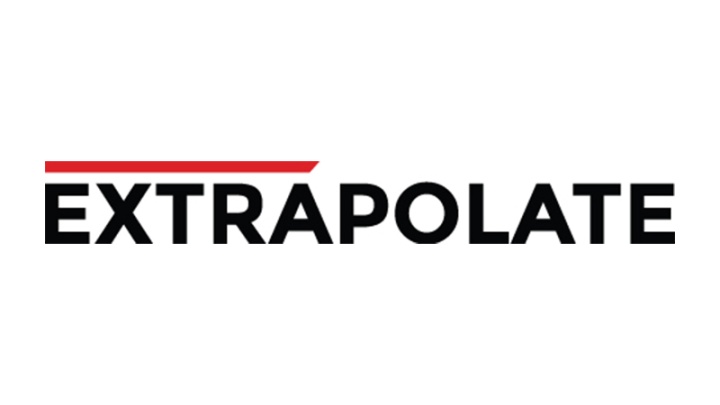A new market analysis highlights the steady growth trajectory of the global hydrogen storage tank market. Valued at USD 17.75 billion in 2023 and projected to grow from USD 18.86 billion in 2024 to a substantial USD 27.53 billion by 2031, the market is set to exhibit a Compound Annual Growth Rate (CAGR) of 5.6% during the forecast period. This growth is primarily driven by the increasing global shift towards hydrogen as a clean energy carrier, the rapid development of hydrogen infrastructure, and continuous advancements in hydrogen storage technologies and materials.
Read Complete Report Details: https://www.extrapolate.com/energy-and-power/hydrogen-storage-tank-market/87492
Report Highlights
The comprehensive report analyzes the global hydrogen storage tank market, segmenting it by Type (Compressed Hydrogen Storage, Liquid Hydrogen Storage, Metal Hydride Storage), by Application (Transportation, Energy Storage, Industrial Applications, Fuel Cells), by Material (Carbon Fiber, Steel, Aluminum, Composite Materials), and Regional Analysis. This detailed segmentation provides valuable insights into the market's dynamics and emerging trends.
Key Market Drivers
- Global Push Towards Decarbonization and Clean Energy: The increasing global emphasis on reducing carbon emissions and transitioning to sustainable energy sources is a primary driver. Hydrogen, as a clean fuel with zero emissions at the point of use, is gaining significant traction across various sectors, necessitating efficient and safe storage solutions.
- Growing Adoption of Hydrogen Fuel Cell Vehicles (FCEVs): The automotive sector is a major catalyst, with increasing investments in and adoption of hydrogen fuel cell electric vehicles (FCEVs) for passenger cars, buses, and heavy-duty trucks. The need for lightweight, high-pressure, and durable hydrogen storage tanks for these vehicles is directly boosting market demand.
- Expansion of Hydrogen Infrastructure: Significant government and private sector investments in developing hydrogen production facilities, refueling stations, and distribution networks are fueling the demand for storage tanks. As the hydrogen economy scales up, so does the need for robust storage solutions across the value chain.
- Advancements in Storage Technologies and Materials: Continuous research and development are leading to breakthroughs in hydrogen storage tank technology. Innovations in materials like advanced composites (especially carbon fiber reinforced polymers), improved manufacturing techniques (e.g., automated filament winding), and enhanced safety features are making tanks lighter, safer, and more cost-effective.
- Increased Use in Industrial Applications and Energy Storage: Beyond transportation, hydrogen is gaining prominence in industrial applications (e.g., steel production, chemical manufacturing, oil refining) and for large-scale energy storage in conjunction with renewable energy sources (e.g., power-to-gas solutions). This diversification of applications drives the demand for various types and sizes of hydrogen storage tanks.
Key Market Trends
- Compressed Hydrogen Storage Dominance: The "Compressed Hydrogen Storage" segment, particularly high-pressure (350-700 bar) tanks, is expected to maintain its dominance. Type III (metal liner with full composite wrap) and especially Type IV (polymer liner with full composite wrap) tanks are leading this segment due to their lightweight nature, high-pressure capabilities, and suitability for mobile applications like FCEVs.
- Carbon Fiber and Composite Materials Leading: The "Carbon Fiber" and "Composite Materials" segments within material types are projected to exhibit robust growth. Carbon fiber reinforced polymer (CFRP) composites offer superior strength-to-weight ratios, crucial for maximizing hydrogen capacity while minimizing tank weight, particularly important for automotive and aerospace applications. Nanocomposites and functionally graded materials are also emerging to enhance durability and reduce leakage.
- Transportation as the Leading Application: The "Transportation" application segment, encompassing FCEVs (cars, buses, trucks, trains, maritime vessels, and even aerospace), will remain the largest and fastest-growing market for hydrogen storage tanks.
- Growing Interest in Liquid Hydrogen (LH2) for Long Haul: While facing boil-off challenges and higher energy consumption for liquefaction, "Liquid Hydrogen Storage" is gaining attention for long-haul transportation (trucks, ships, aviation) due to its high volumetric energy density. Cryo-compressed hydrogen (CcH2) systems, combining benefits of compressed gas and liquid hydrogen, are also being explored for heavy-duty vehicles.
- Advancements in Metal Hydride Storage: Though currently smaller, the "Metal Hydride Storage" segment is witnessing R&D advancements aimed at improving hydrogen absorption/desorption kinetics, storage capacity, and operating temperatures, offering potential for safer, higher volumetric density storage.
- Focus on Cost Reduction and Scalability: Manufacturers are intensely focused on reducing the manufacturing costs of hydrogen storage tanks through automation (e.g., automated filament winding plants), advanced manufacturing processes, and exploring more cost-effective composite materials (e.g., recycled carbon fiber) to make hydrogen competitive with traditional fuels.
- Enhanced Safety Features: Safety remains paramount. The integration of advanced safety features like pressure relief devices (PRDs) and sophisticated leak detection systems is a continuous trend to ensure the safe handling and storage of highly flammable hydrogen.
- Development of Conformable Tanks: Beyond traditional cylindrical shapes, research into "conformable" hydrogen storage tanks that can be integrated more efficiently into vehicle chassis or other confined spaces is an emerging trend to optimize vehicle design and range.
- Asia-Pacific Dominance: The Asia-Pacific region is expected to remain the largest and fastest-growing market, driven by significant investments in hydrogen infrastructure, a strong FCEV production base (especially in Japan, South Korea, and China), and supportive government policies for hydrogen energy. North America and Europe are also investing heavily in hydrogen, leading to substantial market growth.
Key Players in the Global Hydrogen Storage Tank Market:
The global hydrogen storage tank market is highly competitive, featuring a mix of established industrial gas companies, automotive suppliers, and specialized composite material manufacturers. Some of the prominent companies shaping the market include:
- Hexagon Composites ASA
- Luxfer Holdings PLC
- Faber Industrie S.p.A.
- Worthington Industries, Inc.
- Quantum Fuel Systems LLC
- Plastic Omnium (COMPOSITES & PLASTICS)
- NPROXX (a joint venture of Plastic Omnium and Magna)
- Cylinders Holding a.s.
- Steelhead Composites, Inc.
- Doosan Corporation
- Linde plc
- Air Liquide S.A.
- Mahle GmbH
- Kautex Textron GmbH & Co. KG (a Textron Inc. company)
- Toray Industries, Inc. (carbon fiber supplier to tank manufacturers)
These companies are heavily investing in R&D to develop next-generation tanks with higher capacity, lower weight, improved safety, and reduced manufacturing costs, while also forming strategic alliances to expand their market reach and cater to the growing demand for hydrogen storage solutions.
This report offers a strategic overview of the global hydrogen storage tank market, providing valuable insights for manufacturers of tanks, material suppliers, automotive OEMs, energy companies, infrastructure developers, and investors seeking to capitalize on the burgeoning hydrogen economy.
Explore More Reports:
SoftBank and Databricks partner to provide AI data infrastructure
Cybercore signs first sales partner contract in Iwate Prefecture with Hashizume Shoji


